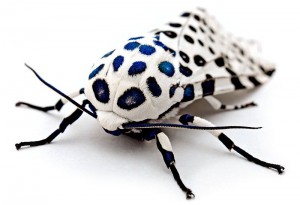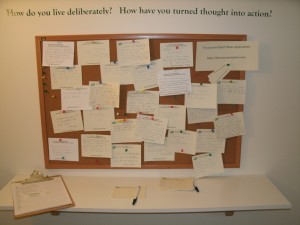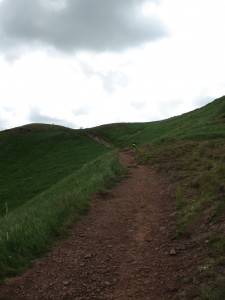By Ashton Nichols
On a huge abandoned tractor tire, in the scrubby woodlot back behind the house, I find a jet-black wooly-worm style caterpillar, as long and as thick as my thumb, his prickly bristles pin-sharp to the touch. An hour later, I return to the spot and he is gone, having wandered off somewhere to weave his thick cocoon, hiding deep in the dark underbrush that separates one large farm field behind us from another.
My field guide tells me that this is a Giant leopard moth larva, Hypercompe scribonia (archaic: Ecpantheria scribona), a member of the family Saturniidae that ranges from southern New England to eastern Mexico. These are among the largest of all moth species in North America, and the family includes such beautiful giants as the luna moth, the cecropia silkmoth, and the two-eyed Polyphemus moth. We used to catch these and mount them in cigar boxes when I was young, amazed at their size and wild coloration, stunned by their furry antennae and always wondering at their astonishing lifestyles.
This caterpillar has hibernated here in our woodlot all winter, and now that it is one of the first warm days of April, he has emerged from his underground hiding place to feed for only a few days. Then he will get to his busy work, forming a dense and silky cocoon in which to metamorphose (what a verb!). He will emerge from his chrysalis stage in two or three weeks, now a fully-formed moth, ready to fly off and find a mate, fully developed and prepared to continue a life cycle that has been going on for who knows how many millions of years.
How can this small creature change so much—from this prickly black and red larva to a delicately winged flying machine—and how can this change possibly happen so quickly; it takes less than a full month. Where do his caterpillar body parts go? What happens to all of those prickly spines and those jagged caterpillar mouthparts, what becomes of all of those wooly worm legs? There were certainly many more than six of them. The adult moth will have just six perfectly formed legs. And what about the bright red rings that marked off his caterpillar segments; where have they gone? Where have all of these earlier parts disappeared to in their cocoon stage?
He emerges from his cocoon as a beautiful black and white adult with shining blue and yellow stripes on his abdomen. Sometimes this iridescent blue—almost a sapphire shiny blue—continues as spots on the top and back of his head. Such metamorphoses remain one of the truly great mysteries of nature. What genetic forces, what chemical combinations, what signals from chromosomes and developmental triggers transform that jet black and fire-engine red caterpillar into this stunning adult creature, with its delicate white wings, its fat orange abdomen, and its oh-so-sapphire blue spots. I do not know.
In his Journal for February 19, 1854, Thoreau says that it is the “mind of the universe” that is responsible for the creation of each moth’s cocoon, for the fashioning of “each particular object.” He adds that, “a kindred mind with mine” determines “how cocoons had best be suspended.” As for me, I just wonder as I wander.
Ashton Nichols holds the Walter E. Beach ’56 Distinguished Chair in Sustainability Studies in Environmental Studies and Science and is a Professor of Language and Literature at Dickinson College.





